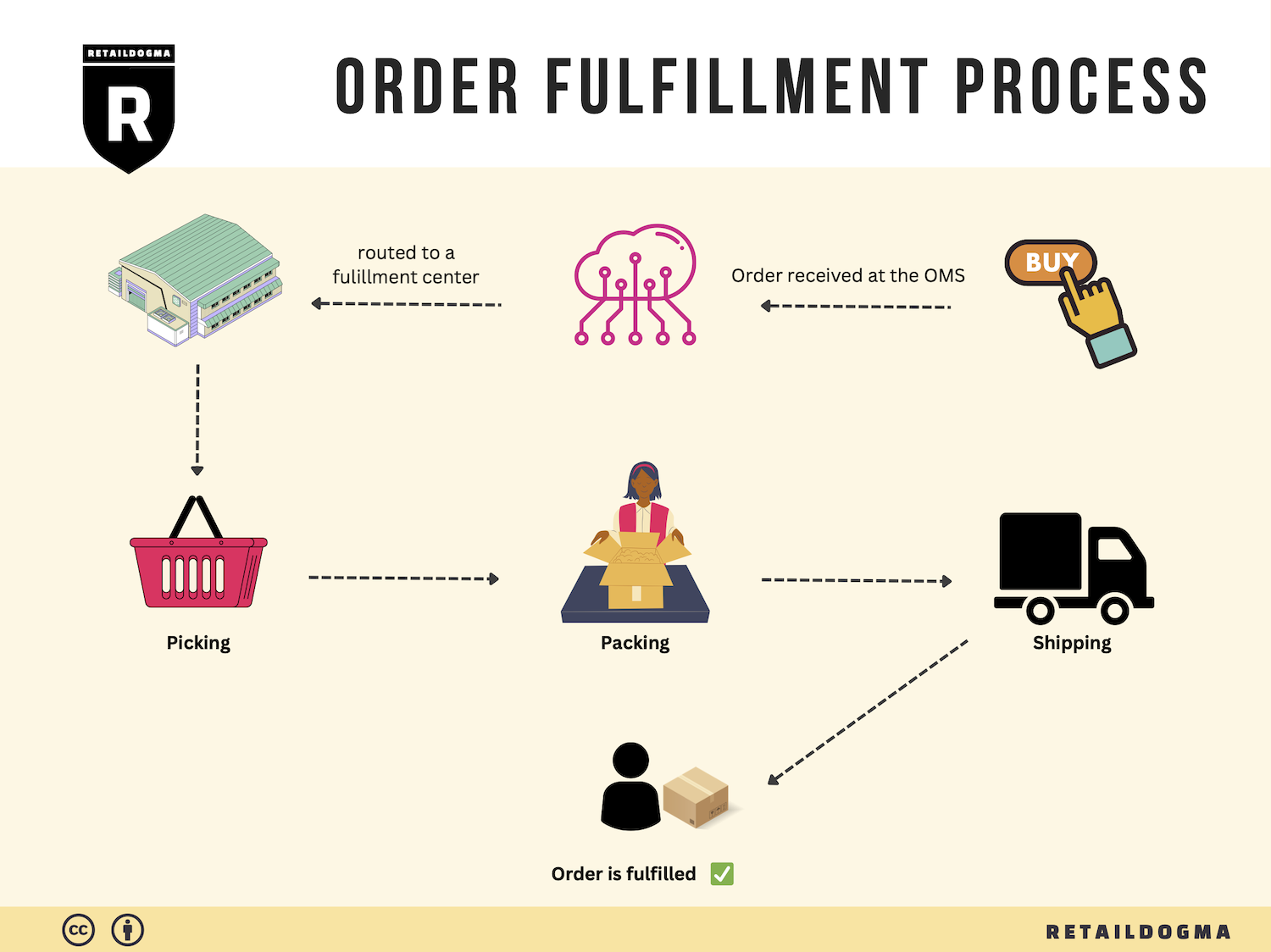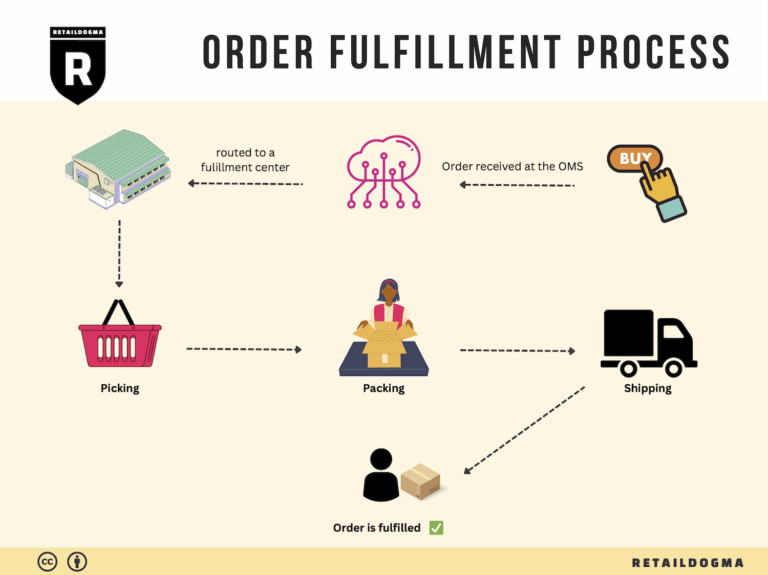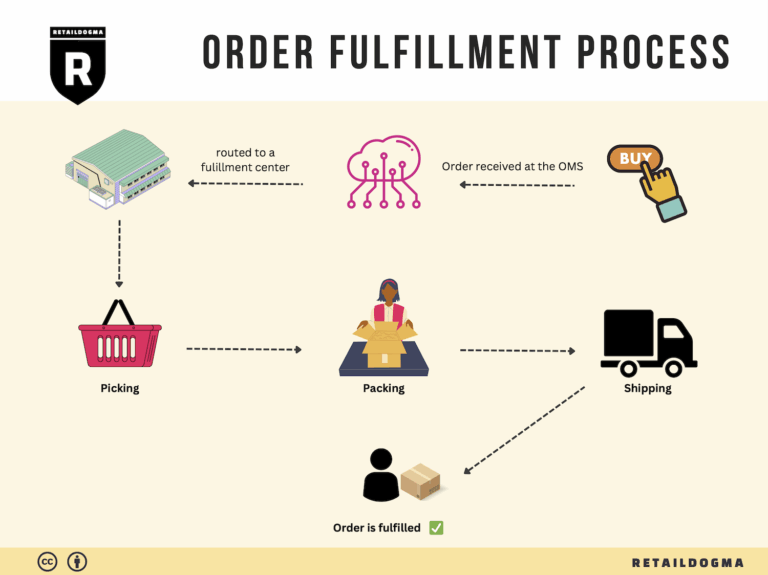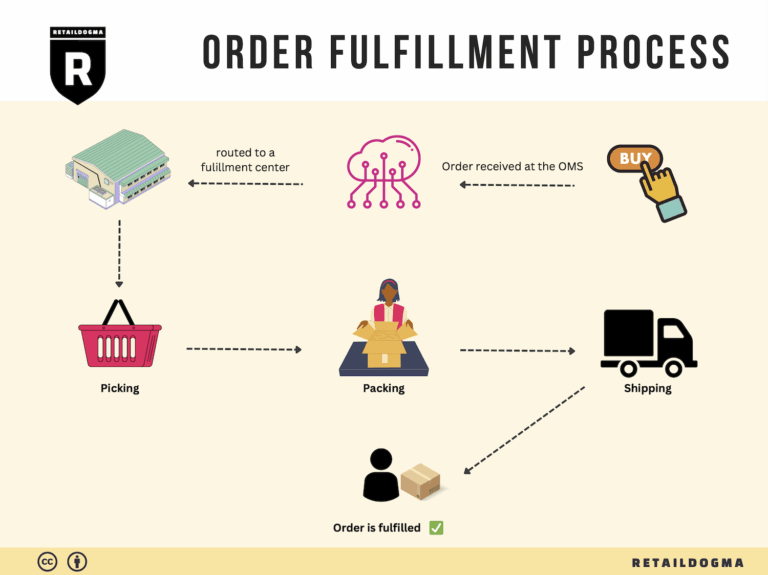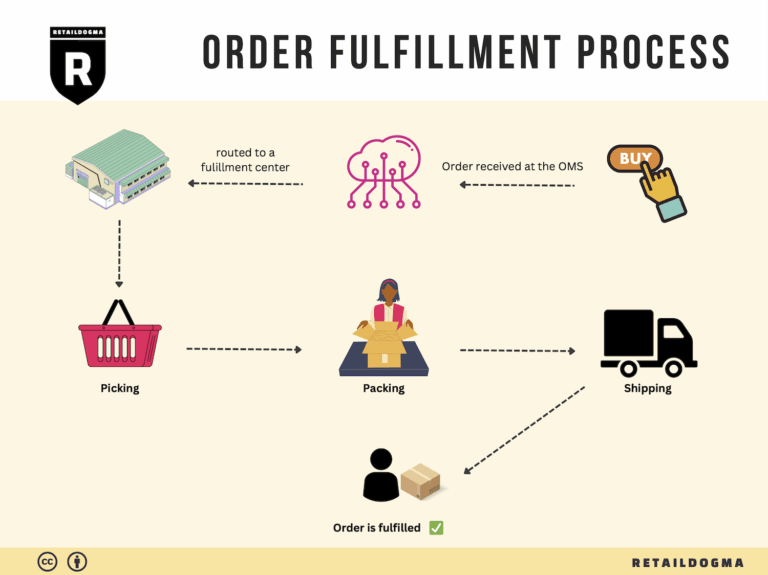How Order Fulfillment Works: A Step-by-Step Guide for Businesses
What is E-commerce Fulfillment? An Introduction for Growing Businesses
Navigating the Challenges of Order Fulfillment
As an e-commerce business owner, you may often find yourself overwhelmed with the demands of packing and shipping orders. The excitement of growing sales can quickly turn into frustration as you juggle inventory management, order processing, and customer service—all while trying to maintain your brand’s quality and reputation. This is where e-commerce fulfillment comes into play.
Fulfillment, in its simplest form, is the process of getting a product from your warehouse to your customer’s doorstep. It encompasses everything from receiving and storing inventory to processing orders, packing products, and shipping them out. As your business scales, the complexities of fulfillment can increase significantly. You may find yourself needing a more efficient solution that allows you to focus on what you do best—growing your business.
What This Guide Covers
In this comprehensive guide, we will explore the various e-commerce fulfillment models available to you, including Third-Party Logistics (3PL) and Fulfillment by Amazon (FBA). Each model has its own set of advantages and can significantly impact your operational efficiency and customer satisfaction.
We will also delve into the core services offered by fulfillment partners, such as pick and pack, inventory management, shipping logistics, and returns processing. Understanding these services will help you identify which offerings align best with your business needs.
Choosing the right fulfillment partner is crucial for your success. We will provide practical tips on evaluating potential partners, including what to look for in terms of reliability, technology integration, and customer support. Additionally, we will cover pricing models, helping you understand the costs associated with various fulfillment services and how to find a solution that fits your budget.
Empowering Your Business
Ultimately, the goal of this guide is to empower you with the knowledge and tools necessary to make informed decisions about your logistics. By understanding the nuances of e-commerce fulfillment, you can select a partner that not only meets your current needs but also scales with your business as it continues to grow. Let’s navigate the world of e-commerce fulfillment together, transforming your logistics challenges into streamlined solutions that enhance your customer experience and drive your business forward.
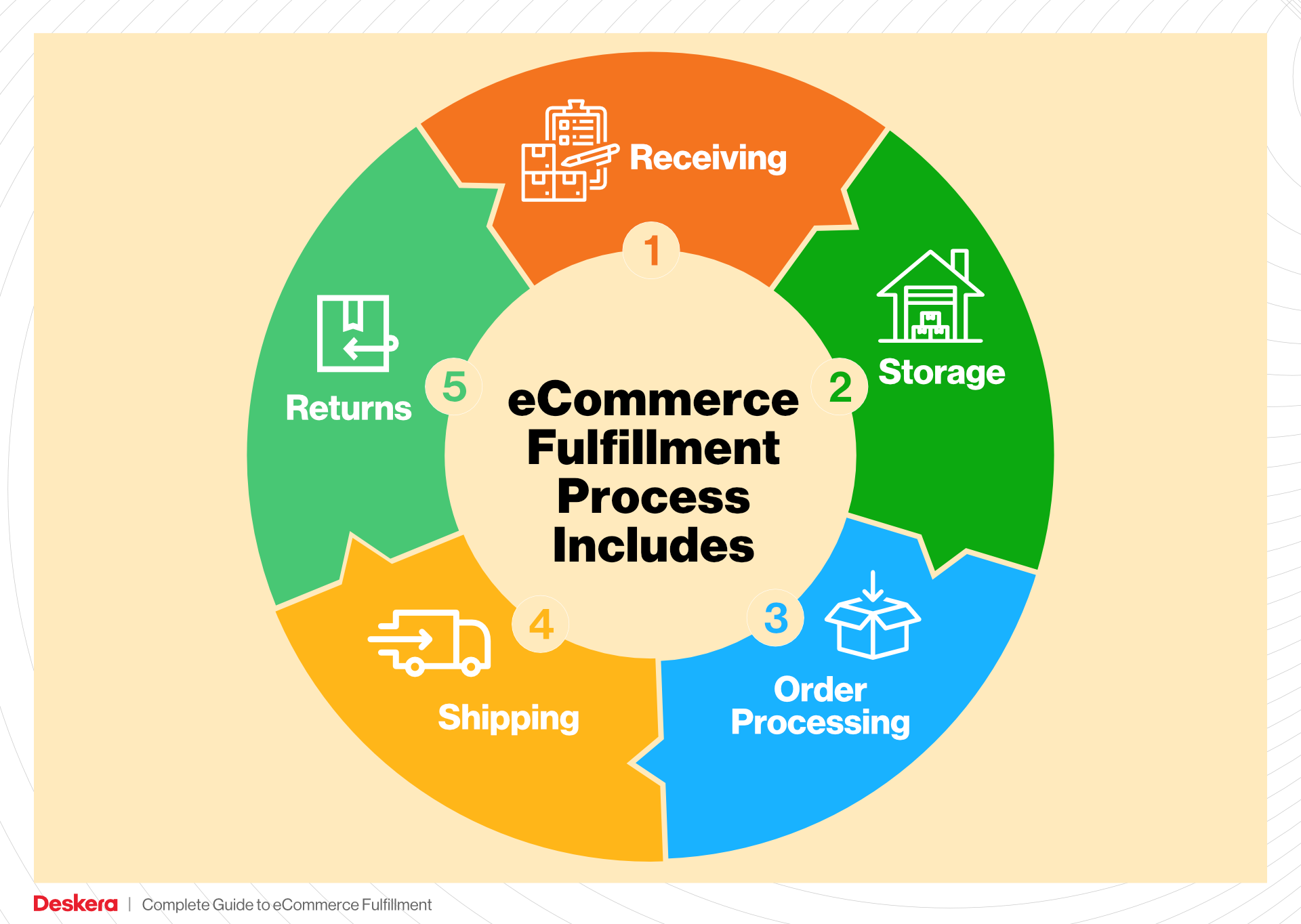
What You’ll Learn In This Guide
- What is E-commerce Fulfillment? An Introduction for Growing Businesses
- The Order Fulfillment Process: From ‘Buy’ Button to Customer’s Door
- Comparing Fulfillment Models: In-House vs. 3PL vs. Dropshipping
- A Deep Dive into Amazon FBA: Pros, Cons, and Who It’s For
- Core Services Offered by Fulfillment Centers
- How to Choose a Fulfillment Partner: A 6-Point Checklist
- Understanding Fulfillment Pricing: A Breakdown of Common Fees
- Frequently Asked Questions (FAQs) about Fulfillment
- Conclusion: Is Outsourcing Fulfillment the Right Move for Your Business?
- Important Disclaimer
The Order Fulfillment Process: From ‘Buy’ Button to Customer’s Door
1. Receiving Inventory
The order fulfillment process begins with receiving inventory at the fulfillment center. When new stock arrives, it is crucial for e-commerce businesses to accurately check and document each item against the purchase order. This step often involves scanning barcodes or entering data into an inventory management system, using key terms like SKU (Stock Keeping Unit) to identify products uniquely.
Why is this step important? Proper receiving ensures that your inventory records are accurate, which is vital for maintaining stock levels and preventing stockouts or overstock situations. Accurate records contribute to better forecasting and inventory management, ultimately leading to improved customer satisfaction. Any discrepancies during this stage can lead to delays further down the line, affecting the entire fulfillment process.
2. Warehouse Storage
Once the inventory is received and verified, the next step is warehouse storage. This involves placing items in designated storage locations within the fulfillment center. Efficient warehouse layout and organization are essential, as they directly impact the speed of order processing. Items should be stored logically, often based on their demand frequency; high-demand items might be placed closer to the shipping area, while less frequently ordered products can be stored further away.
This step is important for several reasons: it maximizes space utilization and minimizes the time taken to retrieve items for orders. A well-organized warehouse can significantly reduce labor costs and improve order accuracy. Key terms associated with this step include slotting, which refers to the strategic placement of products in the warehouse to optimize picking efficiency.
3. Order Picking
The third step in the fulfillment process is order picking, where warehouse staff retrieve items for customer orders. This is typically facilitated by pick lists, which are generated based on incoming orders. These lists detail the items needed, their locations in the warehouse, and the quantities required.

The significance of order picking cannot be overstated—it is often the most labor-intensive and time-consuming part of the fulfillment process. Efficient picking methods, such as batch picking or wave picking, can enhance productivity. Furthermore, accuracy during this stage is critical; mistakes in order picking can lead to customer dissatisfaction and increased return rates. Utilizing technology, such as pick-to-light systems or mobile scanning devices, can streamline this process and improve accuracy.
4. Order Packing
After items have been picked, they move to the order packing stage. This involves carefully packing the items into boxes or mailers, ensuring they are secure and ready for shipment. Packaging materials should be chosen based on the nature of the products being shipped; for example, fragile items may require bubble wrap or additional padding.
The importance of packing lies not only in protecting products during transit but also in creating a positive unboxing experience for customers. This experience can reinforce brand identity and customer loyalty. Key terms related to this step include packing slips, which are documents included in the package that outline the contents of the shipment, ensuring transparency and accuracy.
5. Shipping & Delivery
The final step in the order fulfillment process is shipping and delivery. Once orders are packed, they are labeled and handed over to shipping carriers. This stage involves selecting the appropriate shipping method based on customer preferences and delivery timelines, utilizing services from carriers such as USPS, UPS, or FedEx.
Shipping is crucial because it directly impacts customer satisfaction. Fast and reliable delivery can enhance the customer experience, while delays can lead to frustration and damage to your brand’s reputation. Important terms in this step include tracking, which allows customers to follow their orders in real-time, providing transparency and peace of mind.
In summary, the order fulfillment process is a multi-step operation that requires attention to detail at each stage—from receiving inventory to shipping and delivery. By understanding and optimizing each step, e-commerce businesses can streamline their operations, reduce costs, and ultimately enhance customer satisfaction.
Comparing Fulfillment Models: In-House vs. 3PL vs. Dropshipping
Fulfillment Model Comparison
| Model | Who Handles Inventory | Best For (Business Stage) | Key Advantage | Key Disadvantage |
|---|---|---|---|---|
| In-House Fulfillment | Business Owner/Staff | Established Businesses | Full control over inventory and branding | High overhead costs and resource-intensive |
| Third-Party Logistics (3PL) | Third-Party Provider | Startups to Mid-Sized Firms | Scalable, cost-effective, and expertise access | Less control over fulfillment processes |
| Dropshipping | Supplier/Manufacturer | New Entrepreneurs | Low upfront investment and minimal risk | Lower profit margins and dependency on suppliers |
In-House Fulfillment
In-house fulfillment is when a business manages its own inventory, storage, and shipping operations. This model is often adopted by established businesses with a steady volume of orders and sufficient resources. The key advantage of in-house fulfillment lies in the complete control it provides over the entire fulfillment process. Businesses can tailor their packaging, branding, and shipping methods to enhance customer experience and maintain quality standards. Additionally, having inventory on hand allows for quicker processing times, which can lead to higher customer satisfaction. However, the downsides include significant overhead costs associated with warehousing, staffing, and inventory management. Moreover, scaling operations can become cumbersome and resource-intensive, especially during peak seasons or unexpected demand surges. Businesses must also invest in logistics technology to efficiently manage inventory and shipping, which can further strain resources.
Third-Party Logistics (3PL)
Third-party logistics (3PL) is a fulfillment model where businesses outsource their inventory and shipping operations to a specialized logistics provider. This model is particularly beneficial for startups and mid-sized firms looking to scale without the burden of managing logistics in-house. The key advantage of 3PL is the ability to leverage the expertise and resources of established logistics providers, which can lead to improved efficiency and cost savings. Many 3PL providers offer integrated solutions that include inventory management, order processing, and shipping, allowing businesses to focus on core operations such as marketing and sales. Additionally, 3PLs can scale operations seamlessly, accommodating fluctuations in order volume without the need for significant capital investment. However, the trade-off is a loss of control over the fulfillment process. Businesses must rely on their 3PL partners to maintain quality standards, which can be a concern if the provider does not align with the company’s values or customer expectations. Furthermore, potential hidden costs and contractual obligations can complicate financial planning.
Dropshipping
Dropshipping is a fulfillment model where the retailer does not hold inventory but instead transfers customer orders directly to a supplier or manufacturer, who then ships the products directly to the customer. This model is ideal for new entrepreneurs and those looking to test the market with minimal risk. The primary advantage of dropshipping is the low upfront investment; businesses do not need to purchase inventory upfront or manage warehousing. This model allows entrepreneurs to offer a wide variety of products without the associated costs of inventory management. Moreover, the business can pivot quickly based on market trends without being tied to unsold stock. However, dropshipping comes with its own set of challenges. The most significant drawback is the lower profit margins, as suppliers typically charge higher prices for dropshipping services. Additionally, businesses are dependent on suppliers for product quality and shipping times, which can lead to issues with customer satisfaction if not carefully managed. Since the retailer does not handle the product directly, building brand loyalty and a unique customer experience can also be more challenging.
In conclusion, selecting the right fulfillment model is crucial for e-commerce businesses aiming to scale efficiently. Each model offers distinct advantages and disadvantages, making it imperative for entrepreneurs to evaluate their specific needs, growth projections, and operational capabilities before making a decision. By understanding the nuances of in-house fulfillment, 3PL, and dropshipping, business owners can strategically align their fulfillment strategy with their overall business goals, ensuring a smoother path to growth and customer satisfaction.
A Deep Dive into Amazon FBA: Pros, Cons, and Who It’s For
Understanding Fulfillment by Amazon (FBA)
Fulfillment by Amazon (FBA) is a service offered by Amazon that allows e-commerce sellers to store their products in Amazon’s fulfillment centers. When a customer places an order, Amazon takes care of storage, packaging, and shipping on behalf of the seller. This service not only helps streamline logistics but also provides sellers with access to Amazon’s vast customer base and advanced infrastructure.
How FBA Works
-
Inventory Storage: Sellers send their products to Amazon’s warehouses. Amazon provides guidance on how to prepare and ship these items, ensuring they meet specific packaging and labeling requirements.
-
Order Processing: When a customer orders a product, Amazon picks, packs, and ships the item. This process is highly automated, allowing for fast turnaround times.
-
Customer Service: Amazon handles customer inquiries and returns for FBA products, which means sellers can focus on other aspects of their business without worrying about logistics.
-
Multi-Channel Fulfillment: Sellers can also use FBA to fulfill orders from other sales channels, such as their own website or other marketplaces, further expanding their reach and efficiency.
Pros of Using Amazon FBA
Prime Eligibility
One of the most significant advantages of using FBA is the ability to offer products with Amazon Prime eligibility. This means that Prime members can receive products with fast, free shipping, which can significantly boost sales. Customers are more likely to purchase items that are eligible for Prime, increasing conversion rates for sellers.
Customer Trust
Selling through Amazon, a well-established and trusted platform, inherently boosts customer confidence. Buyers are more likely to purchase from sellers using FBA because they are assured of Amazon’s reliable shipping and customer service. This trust can lead to higher sales volumes and repeat customers.
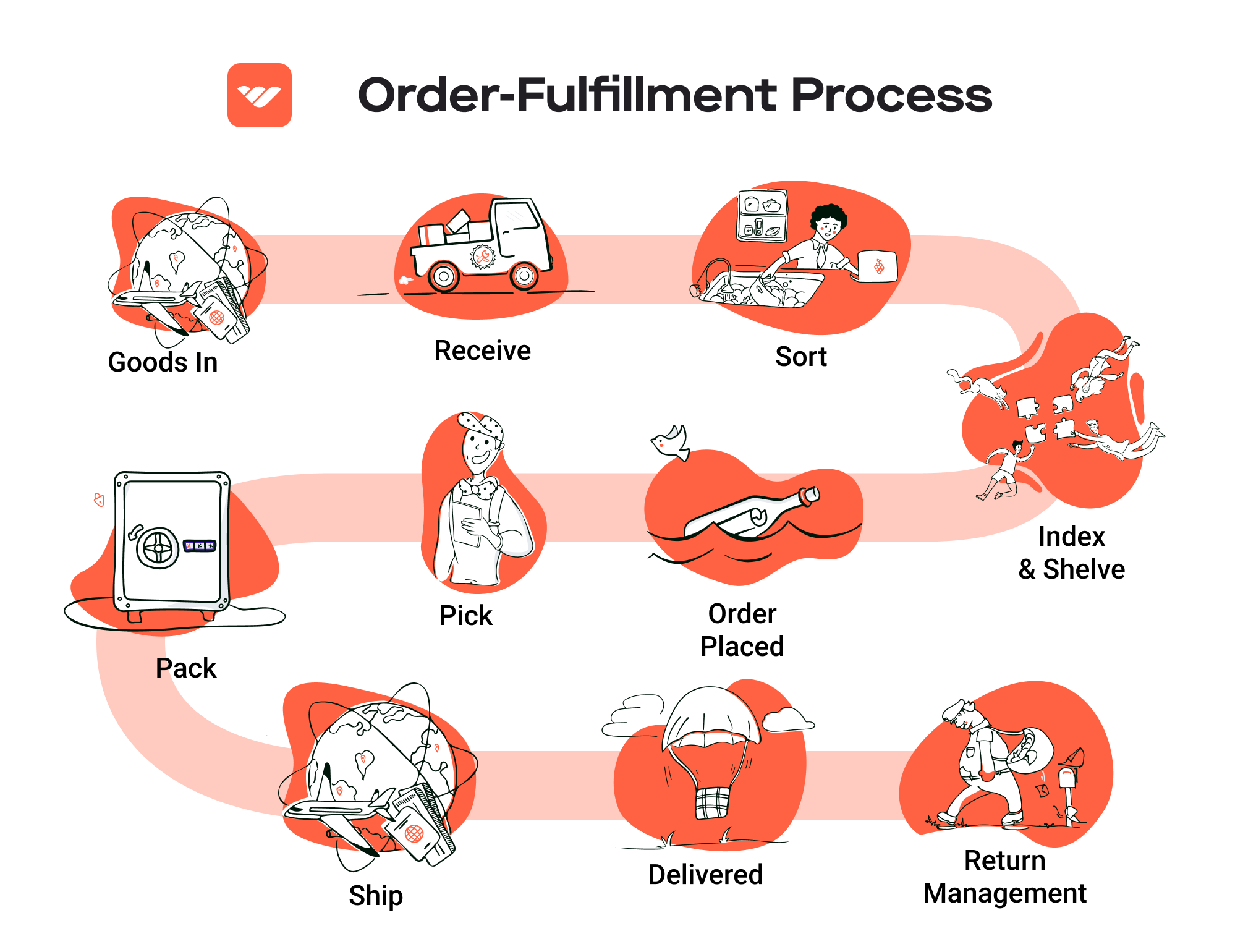
Multi-Channel Fulfillment
FBA is not limited to just Amazon sales. Sellers can use FBA for orders coming from their own websites or other marketplaces, enabling a streamlined logistics process. This flexibility allows sellers to manage inventory efficiently across multiple platforms, reducing overhead and enhancing customer satisfaction.
Advanced Logistics
Amazon has invested heavily in its logistics infrastructure, which allows for efficient inventory management and fast shipping. Sellers benefit from Amazon’s technology and expertise, ensuring that their products are delivered quickly and reliably.
Simplified Returns
Amazon’s handling of returns can save sellers time and hassle. The company manages the entire returns process, ensuring that customers have a smooth experience, which can enhance brand loyalty.
Cons of Using Amazon FBA
High Fees
While FBA provides numerous benefits, it comes at a cost. Sellers face various fees, including storage fees, fulfillment fees, and additional charges for long-term storage. These fees can add up quickly, especially for slow-moving products, potentially eating into profit margins.
Strict Inventory Rules
Amazon has stringent inventory management policies, including requirements for how products should be packed and labeled. Sellers must adhere to these rules, or they risk incurring additional fees or having their products rejected. This can be challenging for new sellers who may not be familiar with these guidelines.
Commingling Risks
FBA uses a process called commingling, where inventory from different sellers can be stored together. This can pose risks for sellers, as they may receive returns or damaged items that do not belong to them. While Amazon offers a program to opt-out of commingling, it can limit the efficiency benefits of FBA.
Limited Control
Sellers relinquish a degree of control over their inventory and fulfillment processes. Amazon dictates shipping methods, packaging, and handling, which may not align with a seller’s branding or customer service philosophy.
Competitive Pressure
With so many sellers using FBA, competition can be fierce. Many sellers may offer similar products, leading to price wars and reduced margins. Additionally, the ease of using FBA can lead to market saturation in certain categories.
Who is FBA Best For?
Fulfillment by Amazon is particularly advantageous for:
-
Small to Medium-Sized Businesses: Those looking to scale quickly without the overhead of managing their own logistics can benefit significantly from FBA.
-
Sellers with High-Volume Products: Businesses that have products with consistent demand can leverage FBA’s efficiencies to maximize profits.
-
New Sellers: Entrepreneurs just starting out can take advantage of Amazon’s infrastructure and customer base to gain traction quickly.
-
Brands Seeking Trust and Visibility: Companies looking to build credibility can benefit from Amazon’s established reputation, particularly in competitive niches.
-
Multi-Channel Sellers: Those who sell on multiple platforms and want to streamline their logistics process will find FBA’s multi-channel fulfillment capabilities invaluable.
In conclusion, while Fulfillment by Amazon offers a robust solution for e-commerce logistics, it is essential for business owners to weigh the pros and cons carefully. Understanding how FBA fits into their overall business strategy will enable sellers to make informed decisions that support their growth objectives.
Core Services Offered by Fulfillment Centers
Inventory Management & Warehousing
Effective inventory management and warehousing form the backbone of any successful e-commerce operation. Fulfillment centers provide businesses with the necessary infrastructure to store products securely and efficiently. This includes climate-controlled storage for sensitive items and ample space to accommodate varying inventory levels.
A robust inventory management system enables real-time tracking of stock levels, helping businesses avoid stockouts and overstock situations. By integrating with e-commerce platforms, fulfillment centers offer automated alerts for low inventory, enabling proactive restocking. This system not only streamlines operations but also enhances customer satisfaction by ensuring product availability.
Additionally, many fulfillment centers offer no long-term storage fees, making it cost-effective for businesses to scale. This flexibility allows e-commerce companies to adjust their inventory based on demand fluctuations without incurring excessive costs. In essence, effective inventory management and warehousing lead to reduced operational costs, improved cash flow, and enhanced customer service.
Pick and Pack Services
The pick and pack process is critical for order fulfillment, directly impacting delivery speed and accuracy. Fulfillment centers employ trained staff and advanced technology to pick items from inventory and pack them securely for shipping. This service is designed to maximize efficiency and accuracy, ensuring that the right products are selected and packaged according to the specific requirements of each order.
One of the key benefits of using professional pick and pack services is the significant reduction in order processing time. With a high order accuracy rate, fulfillment centers minimize the chances of errors, which can lead to costly returns and dissatisfied customers. Moreover, many centers offer customizable packaging options that allow businesses to create memorable unboxing experiences, reinforcing brand identity and customer loyalty.
By outsourcing pick and pack services, e-commerce businesses can focus on core activities such as marketing and product development, while leaving logistics to the experts. This strategic move not only optimizes operations but also fosters growth by enabling businesses to scale their order volumes without compromising service quality.
Kitting and Assembly
Kitting and assembly services are essential for e-commerce businesses that sell products requiring bundling or assembly before shipment. Fulfillment centers can efficiently combine individual items into ready-to-ship kits, whether they are promotional bundles, subscription boxes, or complex product sets. This service saves time and resources, allowing businesses to present their products in a more appealing manner.
The primary benefit of kitting is the ability to streamline the fulfillment process. By preparing kits in advance, businesses can reduce the time spent on order processing, leading to faster delivery times. This efficiency is particularly advantageous during peak seasons when order volumes surge.
Additionally, kitting can enhance customer satisfaction by providing tailored solutions that cater to specific needs or preferences. For instance, offering themed bundles or curated sets can encourage higher average order values and drive sales. Ultimately, kitting and assembly services enable e-commerce businesses to deliver a more personalized shopping experience while optimizing their fulfillment operations.
Returns Management (Reverse Logistics)
Returns management, or reverse logistics, is a crucial aspect of e-commerce fulfillment that directly impacts customer satisfaction and retention. Fulfillment centers offer comprehensive return processing services, including the receipt, inspection, and restocking of returned items. This structured approach minimizes the complexity often associated with returns, making it easier for businesses to manage this inevitable aspect of e-commerce.
A well-managed returns process not only enhances customer experience but also helps businesses maintain accurate inventory levels. By quickly restocking returned items, fulfillment centers ensure that products are available for resale without unnecessary delays. Furthermore, advanced returns management systems provide valuable insights into return reasons, enabling businesses to identify trends and make informed decisions about product quality and customer service.
Moreover, efficient returns management can foster customer loyalty. When customers have a hassle-free return experience, they are more likely to shop again, knowing they can trust the business to handle returns effectively. By leveraging fulfillment centers for returns management, e-commerce companies can turn a potential negative into a positive, ultimately enhancing brand reputation and driving repeat sales.
In summary, fulfillment centers provide a suite of core services that are vital for the success of e-commerce businesses. From effective inventory management and warehousing to efficient pick and pack services, kitting, and returns management, these services enable businesses to streamline operations, reduce costs, and enhance customer satisfaction. By partnering with a reliable fulfillment center, e-commerce owners can focus on scaling their business while ensuring that logistics are handled seamlessly.
How to Choose a Fulfillment Partner: A 6-Point Checklist
Location & Warehouse Network
Why It’s Important:
The location of your fulfillment partner’s warehouses significantly impacts shipping times and costs. Proximity to your customer base can lead to faster delivery, which is crucial for customer satisfaction and retention. A well-distributed warehouse network also helps in managing shipping costs effectively.
Questions to Ask:
– Where are your warehouses located, and how do they align with our target market?
– Do you have plans for expanding your warehouse network in the future?
– How do you handle shipping to different regions, especially international destinations?
Technology & Integrations
Why It’s Important:
In today’s fast-paced e-commerce environment, having robust technology is essential for efficient order processing, inventory management, and real-time tracking. A fulfillment partner should offer seamless integrations with your existing e-commerce platforms to ensure smooth operations.
Questions to Ask:
– What order fulfillment software do you use, and how does it integrate with our e-commerce platform?
– Do you provide real-time inventory tracking and reporting features?
– How do you handle system outages or technical issues?
Specializations (e.g., Cold Storage, Oversized Items)
Why It’s Important:
Different businesses have unique product requirements, such as temperature-sensitive items or oversized products. Choosing a partner with specific capabilities ensures that your products are handled appropriately, maintaining their quality and safety.
Questions to Ask:
– What types of specialized services do you offer (e.g., cold storage, hazardous materials, bulky items)?
– Can you handle unique packaging or kitting requirements for our products?
– What measures do you have in place to ensure compliance with regulations related to specialized items?
Scalability & Capacity
Why It’s Important:
As your business grows, your fulfillment needs will change. A good fulfillment partner should be able to scale operations to accommodate fluctuations in order volume without compromising service quality.
Questions to Ask:
– How do you handle peak seasons or sudden spikes in order volume?
– What is your capacity for storage and order fulfillment?
– Are there any limitations on the types of products or order sizes you can handle?
Pricing and Contracts
Why It’s Important:
Understanding the pricing structure and contract terms of a fulfillment partner is vital for budgeting and financial planning. Transparent pricing helps you avoid unexpected costs that could erode your profit margins.
Questions to Ask:
– Can you provide a detailed breakdown of your pricing structure (e.g., pick and pack fees, storage fees, shipping costs)?
– Are there any hidden fees or long-term contracts that we should be aware of?
– How do you handle pricing changes, and how frequently do they occur?
Customer Support & Reviews
Why It’s Important:
Exceptional customer support can make a significant difference in your operational efficiency. A responsive and knowledgeable support team can help resolve issues quickly, minimizing disruptions in your supply chain.
Questions to Ask:
– What kind of customer support do you offer (e.g., dedicated account managers, 24/7 support)?
– Can you provide references or testimonials from current or past clients?
– How do you handle disputes or service failures, and what is your process for escalation?
Conclusion
Choosing the right fulfillment partner is a critical decision that can significantly affect your e-commerce business’s success. By using this checklist, you can evaluate potential partners based on essential criteria that align with your business goals. Ensure to conduct thorough due diligence and ask the right questions to find a partner who can support your growth and operational needs effectively.
Understanding Fulfillment Pricing: A Breakdown of Common Fees
Initial Setup Fees
Initial setup fees are one-time charges that cover the costs associated with onboarding your business into the fulfillment center’s system. This may include the integration of your e-commerce platform with their software, the configuration of your inventory, and any necessary training for your team on how to utilize their systems effectively.
Typically, these fees can vary widely based on the complexity of your integration and the specific requirements of your business. Some fulfillment companies, particularly those targeting small to medium-sized businesses, may waive these fees entirely to attract clients, while others may charge anywhere from a few hundred to several thousand dollars.
Receiving Fees
Receiving fees are charged when your inventory arrives at the fulfillment center. This fee compensates the fulfillment provider for the time and labor involved in unloading, inspecting, and storing your products. The calculation of receiving fees is often based on the volume of goods received, typically measured in units or pallets.
For example, a fulfillment center might charge a fee per pallet or a fee per item received. It’s essential to clarify whether the receiving fee includes any quality checks or inventory logging, as this can significantly impact your overall costs.
Storage Fees (per pallet/bin)
Storage fees are recurring charges for the space your inventory occupies within the fulfillment center. These fees can be calculated on a monthly basis and are often based on the number of pallets or bins your products occupy.
Some fulfillment centers may offer tiered pricing: for instance, a lower rate for the first few pallets and a higher rate for any additional pallets. Additionally, certain companies impose long-term storage fees if products remain in their warehouse for an extended period, typically over six months. Understanding these nuances can help you manage inventory more effectively and avoid unnecessary costs.
Pick & Pack Fees (per item/order)
Pick and pack fees are charged for the services involved in selecting your products from the warehouse and preparing them for shipment. This fee usually includes the labor required to pick the items, pack them securely, and label them for shipping.
Fulfillment centers may charge a flat fee per order or a fee per item, depending on their pricing model. For instance, if a client orders multiple items in a single order, the fulfillment center may charge a base fee plus an additional fee for each item picked. It’s crucial to determine how the fulfillment provider calculates these fees, as they can significantly affect your overall fulfillment costs, especially for businesses with high order volumes.
Shipping Fees
Shipping fees encompass the costs associated with transporting your products to the end customer. These fees can vary based on several factors, including the size and weight of the package, the shipping method selected (standard, expedited, etc.), and the destination of the shipment.
Most fulfillment companies have established relationships with major carriers, which can help lower shipping costs through negotiated rates. When evaluating shipping fees, it’s essential to consider both domestic and international shipping options, as they may have different pricing structures. Additionally, some fulfillment providers may offer flat-rate shipping options or discounted rates for bulk shipments, which can further impact your overall costs.
Tips for Getting an Accurate Quote
-
Provide Detailed Information: When requesting a quote, be as detailed as possible about your business needs. Include information about your average order volume, product types, and any special handling requirements. This helps the fulfillment provider give you a more accurate estimate.
-
Ask About Hidden Fees: Inquire about any potential hidden fees that may not be included in the initial quote, such as long-term storage fees or additional charges for returns processing.
-
Evaluate Pricing Models: Different fulfillment companies have various pricing models. Ensure you understand how each fee is calculated and whether it aligns with your business needs.
-
Consider Long-term Costs: While upfront costs are important, also consider the long-term implications of fulfillment fees. Look for providers that offer scalable solutions as your business grows.
-
Request Multiple Quotes: Don’t settle for the first quote you receive. Request quotes from multiple fulfillment providers to compare services, pricing, and overall value.
By understanding these common fulfillment pricing models and following these tips, e-commerce business owners can make informed decisions when selecting a fulfillment partner, ensuring they find a solution that meets their operational needs while supporting their growth.
Frequently Asked Questions (FAQs) about Fulfillment
1. What is order fulfillment?
Order fulfillment is the complete process of receiving, processing, and delivering orders to customers. This includes inventory management, picking and packing products, shipping them to customers, and handling returns. Efficient order fulfillment is crucial for maintaining customer satisfaction and ensuring timely delivery.
2. What is a 3PL (Third-Party Logistics) provider?
A 3PL provider is a company that offers outsourced logistics services, including transportation, warehousing, and order fulfillment. By partnering with a 3PL, businesses can streamline their logistics operations, reduce costs, and focus on their core competencies while leveraging the expertise of logistics professionals.
3. How much do fulfillment services cost?
The cost of fulfillment services varies based on several factors, including order volume, storage space, and specific services provided (such as kitting or returns processing). Typical pricing models may include per-order fees, storage fees, and additional charges for value-added services. It’s essential to request quotes from multiple providers to compare costs and services.
4. What’s the difference between a warehouse and a fulfillment center?
A warehouse primarily serves as a storage facility for goods, focusing on inventory management and bulk storage. In contrast, a fulfillment center is designed specifically for order processing and shipping. Fulfillment centers are equipped with systems and processes to pick, pack, and ship products efficiently, often integrating with e-commerce platforms for real-time inventory management.
5. How do I choose the right fulfillment partner?
When selecting a fulfillment partner, consider factors such as their experience in your industry, the technology they use, their shipping capabilities, and their customer service track record. It’s also crucial to assess their scalability to ensure they can grow with your business and meet your evolving needs.
6. What services do fulfillment companies typically offer?
Fulfillment companies often provide a range of services, including inventory management, order processing, pick and pack services, kitting, shipping, returns processing, and customer service support. Some may also offer additional services such as packaging customization and international shipping.
7. How does inventory management work in fulfillment?
Inventory management in fulfillment involves tracking stock levels, monitoring sales trends, and forecasting future inventory needs. Many fulfillment companies utilize real-time inventory management systems that integrate with e-commerce platforms, allowing businesses to maintain visibility over their stock levels and automate reordering processes.
8. Can fulfillment services help with international shipping?
Yes, many fulfillment services are equipped to handle international shipping. They often have established relationships with various carriers and can navigate the complexities of customs and regulations, ensuring that your products reach international customers efficiently and without unnecessary delays.
9. What is the typical order processing time for fulfillment services?
Order processing times can vary by provider and depend on factors such as order volume and the complexity of the fulfillment process. However, many fulfillment companies aim for same-day or next-day processing for orders placed during business hours. It’s essential to clarify expected processing times with your chosen provider.
10. How do fulfillment services handle returns?
Fulfillment services typically offer returns management solutions that streamline the return process for both the business and the customer. This includes receiving returned items, inspecting their condition, restocking inventory, and managing any necessary customer communications. A well-structured returns process can enhance customer satisfaction and loyalty.
Conclusion: Is Outsourcing Fulfillment the Right Move for Your Business?
Evaluating the Benefits of Outsourcing Fulfillment
Outsourcing your fulfillment process can be a game-changer for your e-commerce business. By partnering with a reputable fulfillment service, you can save valuable time that would otherwise be spent managing logistics, allowing you to focus on core business activities such as product development, marketing, and customer engagement. This time-saving aspect is crucial for businesses looking to scale quickly and effectively.
Moreover, fulfillment services offer scalability that is essential for growing e-commerce operations. Whether you experience seasonal spikes in demand or need to expand your product offerings, a flexible fulfillment partner can adapt to your changing needs. They provide the infrastructure and resources necessary to handle increased order volumes without compromising service quality, which is vital for maintaining customer satisfaction.
Additionally, leveraging the expertise of a fulfillment partner can significantly enhance your operational efficiency. These providers are well-versed in best practices for inventory management, shipping, and returns processing. Their experience in navigating complex logistics allows them to optimize your supply chain and reduce costs, ultimately improving your bottom line.
However, the success of outsourcing fulfillment hinges on selecting the right partner. Not all fulfillment services are created equal; it’s essential to find one that aligns with your business goals and values. A good partner will not only offer competitive pricing and reliability but also provide exceptional customer service and transparent communication.
Take Action Today
As you consider your options, take the time to audit your current shipping and fulfillment processes. Assess areas where you can improve efficiency, reduce costs, or enhance customer experience. This evaluation will help you determine if partnering with a fulfillment service is the right strategic move for your business. Remember, the right fulfillment partner can be a catalyst for your growth, turning logistics into a seamless extension of your brand.
Important Disclaimer
⚠️ Important Disclaimer
The information in this guide is for educational purposes. Fulfillment services, pricing, and platform features change frequently. Always conduct your own due diligence and consult with providers directly before making business decisions.
